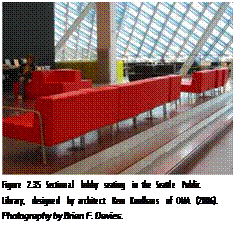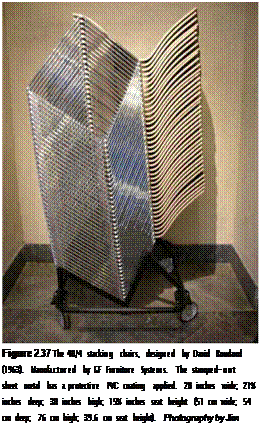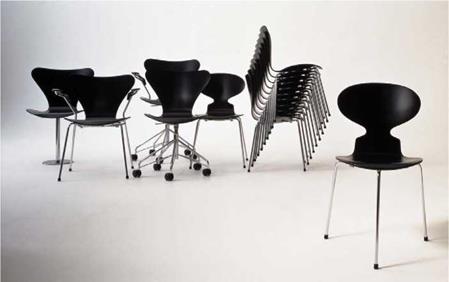Lobbies and reception areas are social-centered places that draw people together for relatively short periods of time (Figure 2.32). Verner Panton’s Living Tower (1969) is composed of interrelated components that make possible a variety of spatial configurations and body postures (Figure 2.33). The sectional seating design is ideally situated for lobby and reception areas. Related to Panton’s Living Tower was Visiona II, a psychedelic exhibit space also designed by Verner Panton, composed of many upholstered components. It was conceived as a three-dimensional body landscape using sinusoidal curved shapes, interlocking components, and bold use of color for an exhibition for Bayer at the Cologne Furniture Fair (1970).
 |
 |
 |
George Nelson’s Platform bench (1946) is modest in form and flexible in use (Figure 2.34). It can be manufactured in different length dimensions using either primavera or ebonized wood for the top and spatially arranged in a number of ways. Lobbies and reception areas need flexible and multifunctional furnishings in order to accommodate changing and temporary uses. The lobby space in Rem Koolhaus’s Seattle Public Library (Figure 2.35) is filled with colorful, sectional, upholstered seating elements designed to accommodate

 |
 |
diverse users (i. e., young, old, individuals, groups, even Seattle’s homeless population) and offers multiple uses (i. e., talking, gathering, reading alone, and resting).



